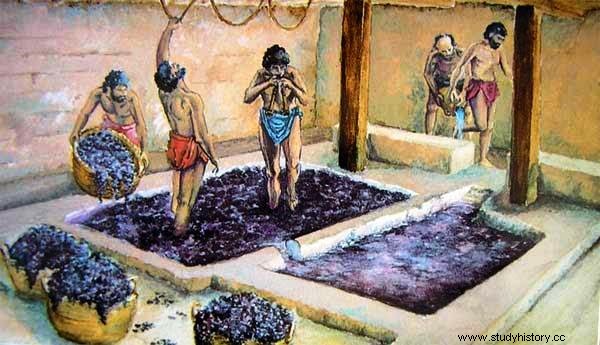Spain is the second most important wine region in the world, only behind Italy. It produces more than 40 million hectoliters of the precious broth a year. Since ancient times, wine has been made and consumed on the Iberian Peninsula. Specifically, L'Alt de Benimaquia , located in the Alicante town of Dénia , boasts of having the oldest winery that existed in our territory. This Iberian site was already producing wine in the 6th century BC due to the influence exerted by the Phoenicians, who traded and founded colonies on the Levantine coast and the Spanish southeast. In Dénia, amphorae of Phoenician origin have been found that would prove that the transformation of grapes into wine was influenced by this people from what is now Lebanon. In ancient times, almost all refined products came from the East. And, logically, also the techniques that were going to allow the perishable gifts of the earth to be transformed into lasting products and therefore suitable for export.

In three presses the grapes were trodden from which the must fell into a fermentation pool. A notch allowed the collection of the wine for its subsequent packaging in amphorae. A possible pressing area was used to extract the pomace. From this area located to the southwest of Montgó the most interesting remains of the site were recovered:about 7,000 clearly cultivated grape seeds from the time .
The territorial breadth that the historical center of Dénia always had, led it to look for a living with new food resources to subsist, and its strategic location in the Western Mediterranean, a place of high commercial traffic, made the municipality one of the largest producers and wine exporters of all antiquity.
During Roman times, the ancient Dianium it exported, but also imported, culinary products to all corners of the Mediterranean. And among them the exquisite wine that he produced in large quantities. It was the cradle of their miscegenation. The wine he produced was not only a consumer product, but was part of a cult, a liturgy, a ritual; his fame transcended beyond the Hispanic borders.
Collaboration Javier Ramos of Places with History
Image:Extremadura historical colloquiums
